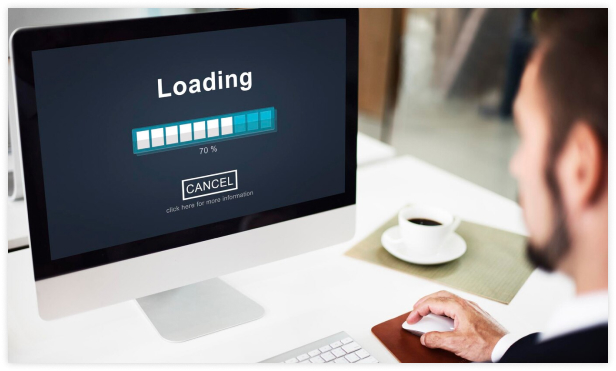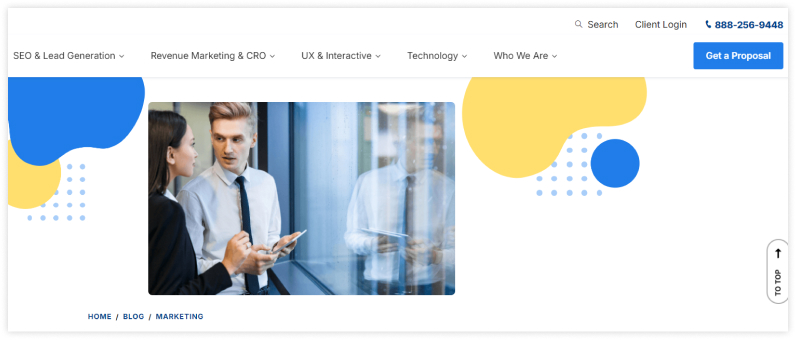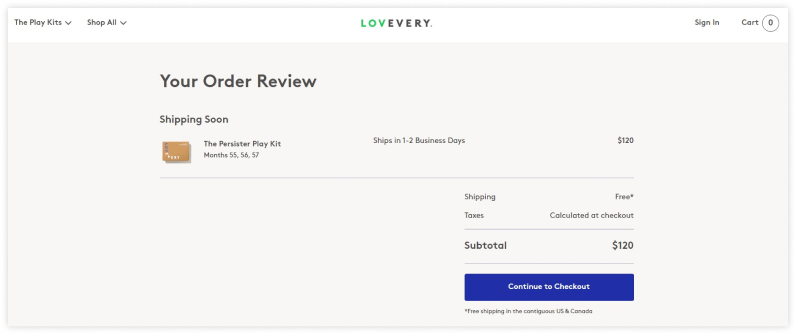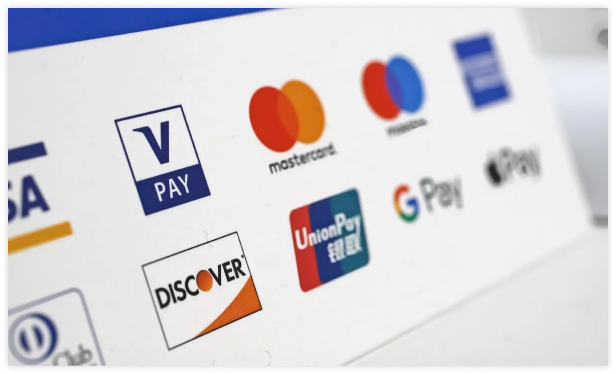A perfect conversion rate optimization strategy can affect more purchases. Even the smallest improvements can make a huge difference to your bottom line. A 1% boost in conversion rate can lead to a 10–20% increase in revenue—showing just how impactful CRO can be without spending extra on ads or promotions.
The average global eCommerce conversion rate was just 1.82% in 2023, meaning there’s a significant opportunity to convert more interested customers into buyers.
Here’s the best part: after reviewing many e-commerce stores, we found that tactics like faster page load times, simple navigation, improved product visuals, personalized recommendations, and trust signals such as customer reviews have a significant impact on increasing conversion rates and sales.
These small improvements help visitors feel more confident about shopping with you.
This guide will show winning Ecommerce conversion rate optimization strategies to improve conversions and grow your sales.
Let’s explore…
What is the Meaning of Conversion in eCommerce?
In eCommerce, conversion refers to the desired action a website visitor takes. The CRO for eCommerce businesses is more about selling physical products, which can be more complex and time-consuming to purchase; for example, an eCommerce store might have a 5 to 6-step checkout process.
E-commerce stores face unique challenges, including shipping and returns, that can influence customer purchasing behavior. This means many opportunities to enhance customer confidence through social proof and streamlined checkout processes.
What is a Good E-commerce Conversion Rate?
A good eCommerce conversion rate varies depending on the industry and specific business. If you do everything right, it might be between 2-3%.
However, it varies and depends upon several factors, such as industry, products, website design, customer experience, marketing efforts, and customer satisfaction.
How to Calculate E-commerce Conversion Rate
To calculate eCommerce conversion rates, you’ll need different data that helps you out.
Use the formula:
Conversion Rate = (Number of conversions/number of visitors) * 100
For example, if you had 10000 visitors and 200 of them get converted,
Conversion rate = (200/10000) * 100 = 2%
Read More: 15 Latest eCommerce Growth Strategies Must Use In 2025
How to Increase Ecommerce Conversion Rate
Follow the best 20 eCommerce conversion rate optimization strategies to improve conversion.
Website Optimization
Your website is the first thing that influences customers to take action. Website optimization includes various aspects to enhance user experience, search engine rankings, and overall performance.
Don’t miss these key elements.
1. Optimize navigation and product categorization
One of the most crucial elements of improving your ecommerce conversion rate is ensuring that your customers can easily find what they’re looking for. A confusing or cluttered navigation can drive potential buyers away before they even get a chance to explore your products.
- Your navigation menu should be clear and intuitive. Avoid overwhelming visitors with too many categories or subcategories. Stick to the essentials and organize products into easily understandable sections.
- Group products are based on customers’ shopping, not just internal organization. For instance, rather than listing products only by type (e.g., “T-shirts”), consider adding categories like “Best Sellers” or “New Arrivals” to guide customers toward popular items.
- A powerful search function that auto-suggests and corrects common typos can improve the user experience. About 43% of visitors on ecommerce sites go directly to the search bar, and optimizing it can increase conversions.
- Offer filters like size, color, price range, and customer ratings to help shoppers find what they want quickly. 66% of users say they prefer shopping on websites with easily accessible filtering options.
2. Use new & quality product Images and videos

Think about what you want to see while shopping – a good-quality image or a video, right?
When shopping online, customers can’t touch or feel the product. The best thing is to show them a detailed video or image so the customer knows exactly what they are getting.
Use high-quality photos and videos on the product pages to better visualize the products they are interested in and maximize conversion rates.
3. Implement best calls to action (CTAs)
Avoid cluttering the screen with too many call-to-action (CTA) buttons, as this can overwhelm your customers. A clear and conscious call-to-action button can significantly boost e-commerce conversions.
Your call-to-action (CTA) guides customers through the conversion funnel, but it won’t be effective if they can’t easily see the button.
Guide users toward the specific call-to-action button you want them to click. For example, if they are on a product page, use “Add to Cart” or “Purchase Now.” Conduct A/B testing on different CTA buttons to understand how users interact with your website and place them accordingly.
Use actinable verbs to motivate customers and create a sense of urgency. Act quickly and see what works best for the audience.
Also Read : 15 Essential Product Page Optimization Strategies
4. Fast loading speed

Optimizing your website’s loading speed by reducing file sizes, utilizing browser caching, and implementing a content delivery network significantly enhances its performance.
Start by optimizing images and compressing them without compromising quality to reduce file size and improve load times. Next, focus on code optimization by minifying CSS and JavaScript to remove unnecessary characters and reduce file sizes.
5. Ensure mobile responsiveness
A responsive website dynamically adapts its layout and content to fit various screen sizes, providing a consistent and user-friendly experience across devices. This improves customer satisfaction and boosts search engine rankings, as search engines prioritize mobile-friendly websites.
As many users use mobile devices, creating a responsive design ensures that images, text, and navigation elements adapt to different screen sizes. It enables you to reach a broader audience and multiply conversions for your eCommerce site.
6. Display your phone number for easy support

Having a phone number displayed prominently on the website makes it easier for customers to contact your support team. Display it on the footer or on your product pages to build trust that they can always pick up the phone and ask queries if they have any.
That helps to increase conversion rates with a touch of authenticity.
7. Leverage user-generated content
Adding user-generated content (UGC) is one of the best eCommerce CRO strategies that can significantly enhance the credibility and authenticity of your brand. UGC refers to any content your customers create—such as reviews, photos, videos, blogs, or social media posts—showcasing your products in real-life scenarios.
Nowadays, consumers are more likely to trust real people over branded marketing content. When potential buyers see others using and enjoying your products, they are more confident in purchasing.
Facilitate the process for customers to leave reviews and ratings on your products, prominently display them on your website, homepage, product pages, and social media channels, and engage with customers who share their experiences.
Leveraging user-generated content can humanize your brand and build stronger connections with your audience, leading to higher conversion rates.
Start Free Trial
Highlight real-time activities like reviews, sales & sign-ups.
User Experience (UX) Enhancement
Online stores must focus on providing unique and personalized experiences to site visitors that help to boost e-commerce conversion rates. Boost your eCommerce sales with these strategies –
8. Make checkout faster and easier

Ensure that everything on your checkout page is completely understood, and reduce the number of pages in the checkout process. Moreover, it guides customers through the checkout journey with clear progress indicators, reducing anxiety and abandonment.
Also, autofill features should be implemented to speed up the checkout flow, reduce errors, improve customer experience, and reduce cart abandonment.
9. Offer guest checkout options
Offer them a guest checkout option to purchase without creating an account, reducing friction and encouraging impulse buys. Ensure the process is optimized for mobile devices, as a significant portion of smartphone shopping occurs.
Guest checkout pages allow customers who are looking to make a one-time purchase. It provides a more convenient and hassle-free shopping experience, making customers more likely to return to your eCommerce website.
10. Provide multiple payment options

Providing multiple payment options drives the inclusivity theory, which is all about creating choices for wider audiences based on geography and behavioral tendencies. Consider accepting major credit cards, digital wallets, debit cards, and cash on delivery to ensure customers can easily complete their purchases.
By offering customers a more comprehensive range of choices, you can multiply your customer base, reduce cart abandonment, and enhance the shopping experience.
11. Display trust badges and security seals
18% of customers abandon at checkout because they don’t trust the website’s credibility.
eCommerce websites must build trust quickly for customers willing to make purchases by entering their personal and financial details. Finding different ways to enhance trust and credibility helps to improve the ecommerce conversion rate.
The most effective way is to showcase trust badges and security seals on the website and checkout pages, increasing trust. Some popular badges, such as SSL certificates verified by Visa or Mastercard and Better Business Bureau (BBB) accreditation, can reassure customers that their personal and financial information is safe.
12. Offer free shipping or other incentives

In today’s market, free shipping is a must. Customers are more likely to visit your competitor’s site if your store does not offer free shipping.
Consider setting a minimum order value for free shipping, using a promotional tool, and communicating your policy. Additionally, an alternative option to free shipping is to increase your product prices to cover the shipping costs.
13. Offer live chat support or chatbots
Using live chat to interact with customers can help them get answers to their questions without waiting for a long time over the phone call. It’s an efficient and convenient way to connect with customers and address their needs.
They provide real-time assistance, reduce support ticket volume, and gather valuable customer data to improve the personalized experience.
Unique Ecommerce Conversion Rate Optimization Techniques
With the advancement in techniques, eCommerce stores can help to improve your website’s ability to convert visitors into customers. Take your CRO to the next level with these expert tips –
14. Use social proof (e.g., live notification)
One of the latest eCommerce conversion rate optimization tactics involves leveraging social proof to build trust and drive conversion, two key factors influencing purchasing decisions. Social proof, such as live notifications, gives potential customers the confidence to take action by showing that others are actively engaging with your brand.
These real-time updates on your website, such as “James from New York just purchased this item,” create a sense of urgency and excitement, demonstrating that others actively engage with your brand and products.
Live notifications and other social proof messages can significantly increase an e-commerce site’s conversion rate.
15. Create a sense of urgency
A sense of urgency is a powerful motivator for customers to take action. By creating a limited-time offer, scarcity, or FOMO, you can encourage customers to purchase now rather than later.
Limited-time offers, such as flash sales or time-sensitive discounts, can create a sense of urgency and encourage customers to take quick action. Countdown timers can visually represent limited-time offers, exclusive deals, or early access to new products, which can also create a sense of FOMO, encouraging customers to purchase before others.
16. Personalization
Personalization is the process of tailoring webpage content, graphics, messaging, and other elements to the tastes and preferences of website visitors. Leverage customer data to create detailed profiles, including purchase history, browsing behavior, search queries, and demographics.
Moreover, AI-powered algorithms can suggest products and marketing campaigns that align with individual customers’ interests and needs. Dynamic content allows you to improve customer website content and e-commerce conversion rates.
17. Exit Intent popups
Exit-intent popup uses the exit-intent technique to detect when visitors are about to leave the website and make a final offer to encourage them to convert or continue browsing. Exit popups can be shown to every visitor, which helps to reduce cart abandonment, build email lists, and collect website feedback from visitors.
Please provide them with a compelling offer that addresses the user’s potential needs or pain points. Keep the popup message brief and concise, focusing on the value proposition. Avoid overly intrusive designs that can frustrate users.
18. Data and analytics
Data and analytics are indispensable tools for eCommerce businesses. You can make informed decisions, optimize your website, and drive growth by leveraging data-driven insights. Moreover, you should track website traffic, user behavior, and conversion rates using tools like Google Analytics.
Segment your customers based on demographics, purchasing behavior, or other criteria. Calculate the customer lifetime value (CLTV) to understand each customer’s long-term value and optimize your marketing efforts accordingly.
Data and analytics can help you improvise marketing efforts, personalization, and data-driven decisions to optimize your e-commerce business.
19. A/B Testing
A/B testing is a powerful technique for comparing different versions of a web page or marketing campaign to determine which performs better. By making small changes and measuring the results, you can optimize your website for maximum conversions.
Moreover, A/B testing provides data-driven decision-making, allowing you to make informed choices based on concrete evidence. Common areas to A/B include page layouts, calls to action, product images, checkout process, and email marketing campaigns.
Continuously analyze your A/B test results and iterate based on your analysis to optimize your website for maximum conversions and drive business growth.
Successful Conversion Rate Optimization Ecommerce Examples
1. Chewy
Chewy, a popular online retailer of pet products, experienced high cart abandonment rates due to a complex checkout process.
Solution:
- Guest Checkout Option: Chewy introduced a simplified guest checkout, removing the need for first-time customers to create an account.
Results:
- Higher conversion rates are due to a simplified checkout process and improved customer support, which create a frictionless shopping experience for pet owners.
2. Allbirds
Allbirds, known for its sustainable footwear, wanted to showcase its eco-friendly mission more effectively to boost conversions among environmentally conscious consumers.
Solution:
- Sustainability Messaging: Allbirds redesigned their product pages to highlight the environmental benefits of their products, such as using renewable materials and showcasing the carbon footprint.
Results:
- After highlighting their sustainability efforts, they saw a 15% increase in conversion rates, appealing to customers looking for environmentally responsible products.
Final Thoughts
As online shopping becomes increasingly important for eCommerce businesses, it’s crucial to implement strategies that help attract and convert the target audience. Implementing the strategies outlined in the blog post can enhance user experience, improve search engine ranking, and grow conversions.
Website optimization is an ongoing process. To remain competitive, continuously monitor your website’s performance, gather feedback, and stay updated with trends. Invest in different strategies that ultimately drive business growth and sales.



